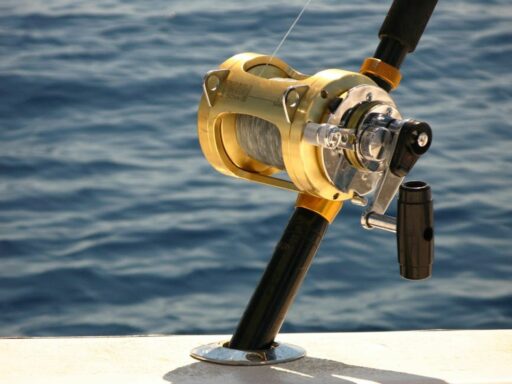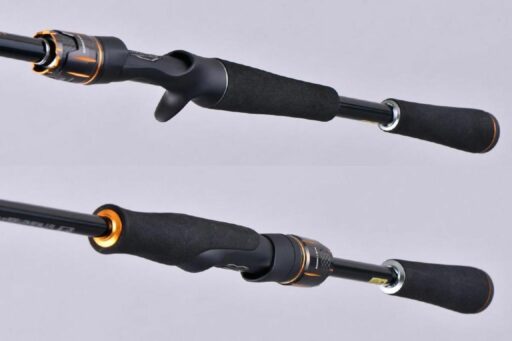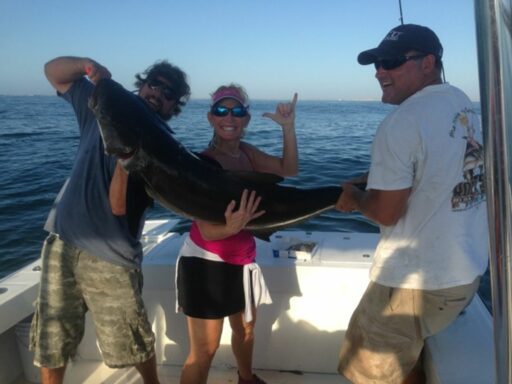Kayak fishing is an increasingly popular sport that combines the serenity of being on the water with the excitement of the catch. The right equipment can make all the difference in your fishing adventure, and one of the most critical components is the fishing rod holder. This guide dives into the essential features of kayak fishing rod holders, offers mounting tips, and provides insights on choosing the best kayak for fishing. Whether you’re a novice or an experienced angler, these tips will help you maximize your kayak fishing experience while ensuring safety and preparedness on the water.
Key Takeaways
- Choose a rod holder with the right mount for your kayak’s design: flush mount for sleek integration, or deck mount for easy accessibility.
- Select rod holders made from durable materials like high-strength plastic or stainless steel to withstand the marine environment.
- Consider adjustability features in rod holders to accommodate different fishing techniques and enhance rod accessibility.
- Ensure your kayak has sufficient storage options and is compatible with the fishing gear and accessories you plan to use.
- Follow safety guidelines when mounting rod holders and always carry essential safety gear while kayak fishing.
Essential Kayak Fishing Rod Holder Features

Types of Rod Holders: Flush Mount vs. Deck Mount
When it comes to kayak fishing, the type of rod holder you choose can significantly impact your experience. Flush mount rod holders are integrated into the kayak’s hull, providing a sleek and unobtrusive design. They are ideal for anglers who prefer a streamlined setup and are typically used in locations where the fishing lines are less likely to get tangled.
On the other hand, deck mount rod holders offer more flexibility in placement and are easier to install and remove. They are mounted on top of the kayak’s deck using bolts or clamps and can be positioned for optimal accessibility. Deck mounts are versatile and can be adjusted to different angles, making them suitable for a variety of fishing techniques.
Both types of rod holders have their merits, and the choice often comes down to personal preference and the specific needs of your fishing style.
Here’s a quick comparison to help you decide:
- Flush Mount:
- Low profile
- Less prone to snagging lines
- Permanent installation
- Deck Mount:
- Highly adjustable
- Easy to install and remove
- Requires more space on the deck
Material and Durability Considerations
When selecting a kayak fishing rod holder, the material and its durability are crucial factors that directly impact the longevity and performance of the holder. High molecular weight polyethylene (PE) is a popular choice due to its exceptional durability and lightweight properties, making it ideal for the demanding conditions of kayak fishing.
- Polyethylene (PE): Offers excellent impact resistance and is less prone to wear-and-tear.
- Fiberglass: Known for its strength and flexibility.
- Graphite: Provides a lighter option with good sensitivity.
- Composite: A blend of materials that can offer the best of both worlds.
The right material not only ensures that your rod holder can withstand the rigors of fishing but also contributes to the overall weight and balance of your kayak. It’s important to consider the trade-offs between weight and durability to find the perfect match for your fishing style and kayak design.
Adjustability and Accessibility
When selecting a fishing rod holder for your kayak, adjustability and accessibility are paramount. These features ensure that you can easily reach and maneuver your rod, regardless of your position in the kayak or the fishing technique you’re employing.
For instance, some rod holders offer a tilt and swivel mechanism that allows anglers to quickly change the rod’s angle and orientation. This is especially useful when reacting to a fish strike or adjusting your lines in multi-rod setups.
Consider the following list of adjustability features that can enhance your fishing experience:
- Tilt function for optimal rod angle
- Swivel base for 360-degree rotation
- Quick-release mechanisms for fast rod access
- Locking systems for securing the rod during rough conditions
It’s essential to have a rod holder that not only withstands the elements but also provides the flexibility to adapt to various fishing scenarios.
Accessibility also extends to the ease of installation and removal of the rod holder itself. Look for models that offer tool-free adjustments or ones that come with all necessary mounting hardware for a hassle-free setup.
Additional Storage and Accessory Integration
Integrating additional storage and accessories with your kayak fishing rod holders can significantly enhance your fishing experience. Optimizing your kayak’s storage capabilities ensures that all your gear is accessible and secure, even in rough waters. Many anglers opt for solutions like the YakAttack BlackPak Pro Kayak Fishing Crate, which includes attachable fishing rod holders and is designed for efficient gear organization.
When considering additional storage options, it’s important to look for systems that are compatible with your kayak model. For instance, the Access Plate – 1AC1-0018 is suitable for kayaks such as the SS107, SS127, and RS117, providing easy access for installing electronics and other accessories. Similarly, comfort and ease of transport can be improved with items like the Fat Grip Stern Handle, which is compatible with the SS107 and SS127 models.
By thoughtfully integrating storage and accessory options, you can create a customized fishing setup that caters to your specific needs and preferences.
Remember to assess the weight distribution and balance of your kayak after adding new accessories to maintain optimal stability and performance on the water.
Mounting Your Kayak Fishing Rod Holders

Selecting the Optimal Location for Installation
Choosing the right spot to mount your rod holders is pivotal for both convenience and functionality while kayak fishing. Consider the type of fishing you’ll be doing and the layout of your kayak to determine the best placement. For instance, if you’re sight-fishing or casting to specific points, you may want a location that allows for quick and easy access to your rods.
- Accessibility: Ensure rod holders are within easy reach while seated.
- Interference: Avoid areas where the rod holders might interfere with paddling or other fishing activities.
- Balance: Distribute the weight evenly to maintain kayak stability.
- Integration: Consider how rod holders can integrate with existing mounts like the YakAttack CellBlok or Power-Poles.
When selecting a location, also take into account the need for quick detachment in case of emergencies or for convenience when transporting your kayak. The YakAttack SwitchBlade Transducer Deployment Arm is an example of smart design that allows for easy attachment and removal without drilling holes.
Remember to check local regulations and any manufacturer’s recommendations for mounting, as these can influence your decision. Additionally, think about future upgrades or accessories you might want to add, such as outriggers or shade systems, to ensure compatibility and avoid having to reposition your rod holders later on.
Tools and Equipment Needed for Secure Mounting
Before you begin the installation of your kayak fishing rod holders, it’s essential to gather all the necessary tools and equipment. Having the right tools at hand will ensure a smooth and secure mounting process.
- Drill with various drill bits
- Marine-grade stainless steel screws
- Screwdriver or power drill with screwdriver bit
- Silicone sealant or marine adhesive
- Measuring tape
- Marker or pencil
- Safety glasses
Remember, using marine-grade materials is crucial to prevent corrosion from exposure to water and to ensure the longevity of your rod holders.
Ensure you have a clean workspace and all items are easily accessible before starting. This preparation will help you avoid any interruptions once you begin the installation.
Step-by-Step Installation Guide
Once you have selected the perfect spot for your rod holder and gathered all the necessary tools, it’s time to begin the installation process. Ensure that the area is clean and dry before you start drilling any holes. This will help in preventing any water ingress and potential damage to your kayak.
Follow these steps for a smooth installation:
- Position the rod holder template on the chosen spot.
- Mark the drill points using a marker or a punch.
- Carefully drill the holes, making sure they are the correct size for your hardware.
- Apply a marine-grade sealant around the holes to create a waterproof barrier.
- Place the rod holder over the holes and secure it with the provided screws or bolts.
- Tighten the hardware until it is snug, but avoid over-tightening which can cause damage.
After installation, give the rod holder a gentle tug to ensure it is firmly attached. This simple test can prevent future accidents and loss of equipment.
Remember to review the User Guide or Manual that came with your rod holder for any specific instructions or recommendations. These documents often contain valuable information tailored to your product.
Safety Tips and Best Practices
When mounting your kayak fishing rod holders, safety should be your top priority. Ensure all tools and hardware are suitable for marine use to prevent rust and degradation. It’s crucial to regularly inspect your rod holders for any signs of wear or damage, as failure could lead to loss of equipment or even capsize.
- Always wear a personal flotation device (PFD) while installing rod holders.
- Use a spotter or assistant to help with the installation to maintain kayak stability.
- Test the rod holder with a spare rod to ensure it can handle the stress of a catch before heading out.
Remember, the goal is not only to secure your rod holders but also to maintain the integrity and balance of your kayak. Improper installation can affect the kayak’s performance and your safety on the water.
For more comprehensive safety guidelines and best practices, consider visiting a dedicated website page featuring tips, techniques, and gadgets for various types of fishing rods. This resource may also offer insights into related topics such as canoe fishing, rod length, and bass fishing, which can enhance your overall fishing experience.
Choosing the Right Kayak for Fishing

Stability and Comfort Features
When selecting a kayak for fishing, stability is paramount. The tunnel hull design is a popular choice, offering exceptional stability which provides a secure and steady ride. This design feature is crucial for anglers who stand up to cast lines and reel in fish, as it minimizes the risk of tipping and allows for easy movement on deck.
Comfort is equally important for long hours on the water. Look for kayaks with adjustable seating systems, such as the ERGOCAST CLASSIC, which can be positioned high or low to suit your preference and provide varying levels of support. Lightweight construction, using materials like high molecular weight polyethylene, ensures that the kayak is not only durable but also easy to transport and store.
Premium fishing kayaks come equipped with features that enhance both stability and comfort. These may include multiple storage options, flush mount rod holders, and accessory integration, all designed to create a more enjoyable and efficient fishing experience.
Storage Capacity and Organization
When selecting a kayak for fishing, storage capacity and organization are crucial for a successful and hassle-free experience. The ability to neatly store and access your gear can make a significant difference in your fishing efficiency. For instance, the YakAttack BlackPak Pro Kayak Fishing Crate is designed to optimize space and organization. It features 6 Rod Holders with built-in rod leashes, ensuring your rods are secure and easily reachable.
Kayaks like the CATCH CLASSIC 100 offer multifunctional storage solutions, including a front quick-lock box and a rear storage platform with bungee cords. These features allow for the convenient placement of essentials and additional fishing gear. Moreover, below-deck rod storage and compartments for specific items such as castnet buckets are becoming increasingly popular, as seen in models like the new 2200 TRS.
It’s important to consider how the kayak accommodates your fishing style. Whether you prefer open water or narrow streams, the layout and accessibility of storage options can greatly impact your fishing tactics and comfort on the water.
Compatibility with Fishing Gear and Accessories
When selecting a kayak for fishing, compatibility with your fishing gear and accessories is paramount. A kayak should offer the flexibility to accommodate various types of equipment, from rods and reels to tackle boxes and electronic devices.
- Monofilament, braid, and fluorocarbon lines should be easily storable, while hooks, jigs, and other terminal tackle must be accessible.
- Electronics like fish finders require secure mounts, and additional storage for tools and nets is a plus.
- Apparel and safety gear should have dedicated spaces to ensure they are at hand when needed.
The right gear can make a significant difference in your fishing experience, so it’s worth investing in a kayak that integrates well with your preferred equipment.
Remember, while additional gear items can enhance your experience, your skill as an angler and knowledge of the water are crucial. Choose a kayak that not only fits your gear but also complements your fishing style and techniques.
Top Kayak Models for Anglers
When selecting a kayak for fishing, the model you choose can greatly impact your experience on the water. The Bonafide EX123 stands out as the ‘SUV of kayaks’, offering a unique sit-inside design that’s ideal for navigating backwater areas and reaching secluded fishing spots. Its portability makes it a top choice for anglers who value convenience and functionality.
For those who prioritize stability and comfort, the Pelican Catch Classic 100 is a superb option. It features an Ergocast Dual Position Seating System, ensuring a comfortable day of fishing. Here’s a quick comparison of some popular models:
| Kayak Model | Rating | Price Range |
|---|---|---|
| Pelican Sit-on-top Fishing Kayak | 4.3/5 | $569.54 – $638.53 |
| Lifetime Tamarack Angler 100 | 4.5/5 | $443.82 – $898.99 |
| Pelican Sentinel 100XP Angler | 5.0/5 | $604.42 – $615.72 |
Remember, the best kayak for you depends on your specific needs and the type of fishing you plan to do. Consider the kayak’s weight, storage capacity, and how it will integrate with your fishing gear before making a decision.
Maximizing Your Kayak Fishing Experience

Effective Use of Rod Holders for Various Fishing Techniques
Kayak fishing requires not only skill but also the strategic use of equipment to enhance your chances of a successful catch. Proper placement and use of rod holders can significantly impact your fishing efficiency, especially when employing different techniques. Here are some tips for using rod holders effectively:
- For trolling, consider the type of rod guides you’re using. Roller guides are often preferred for larger fish due to their smooth operation.
- Position rod holders to allow quick access and easy reach from your kayak seat. This is crucial when you need to swiftly respond to a bite.
- Adjust the angle of the rod holder based on the fishing technique; vertical for jigging, angled back for trolling, and horizontal for still fishing.
Remember, the goal is to optimize your rod placement for the type of fishing you’re doing, which will vary depending on the target species and the fishing environment.
When fishing in areas with low bridges or tight spaces, under-gunnel rod storage can keep your gear secure and out of the way. This is particularly useful when navigating narrow canals or when bass fishing. Always ensure that your rod holders are securely mounted and that your rods are well-secured within them to prevent loss or damage.
Accessorizing Your Kayak for Enhanced Functionality
To truly maximize your kayak fishing experience, accessorizing your kayak is key. Consider adding a variety of mounts and holders to keep your gear organized and within easy reach. For instance, rigging tracks allow for the customization of your kayak’s deck with a range of accessories, from additional rod holders to GPS units.
- Flush mount rod holders for a sleek, integrated look
- Deck hooks and eyelets for securing gear
- Adjustable footrests for improved comfort and stability
- Paddle tie-downs to free your hands when not paddling
- A bottle holder to keep hydration within arm’s reach
By strategically placing these accessories, you can create a more efficient and enjoyable fishing environment. Remember to balance the placement of gear to maintain the kayak’s stability and avoid cluttering your fishing space.
When selecting accessories, prioritize those that offer durability and ease of use. High-quality materials such as UV-resistant plastics and corrosion-resistant metals will ensure your accessories withstand the elements and the test of time. Additionally, consider the weight capacity of your kayak and the total weight of your added accessories to maintain optimal performance and safety on the water.
Maintenance Tips for Rod Holders and Fishing Gear
Proper maintenance of your rod holders and fishing gear is crucial for ensuring longevity and peak performance. Regularly inspect your rod holders for signs of wear and tear, and address any issues promptly to prevent equipment failure during your fishing trips.
After each use, especially in saltwater environments, rinse your rod holders and fishing gear with fresh water to remove salt and debris. This simple step can significantly extend the life of your equipment. For fishing rods, after washing with fresh water, store them in overhead rod holders with at least 3 brackets out of the sun and weather. It’s better to remove the weight of the reels to avoid unnecessary strain on the rod.
When it comes to tackle and lines, organization is key. Keep your tackle box tidy and regularly check your fishing lines for nicks or wear, replacing them as needed to ensure they don’t fail when you’ve hooked your target species.
Here’s a quick checklist for rod holder maintenance:
- Inspect for damage or corrosion
- Tighten any loose fittings or hardware
- Lubricate moving parts if applicable
- Check for proper alignment and adjust as necessary
Advanced Tactics for Seasoned Kayak Anglers
Seasoned kayak anglers often seek to refine their approach to maximize their catch. Mastering advanced tactics can be the difference between a good day on the water and a great one. Here are some sophisticated strategies to consider:
- Drift fishing: Utilize the current to carry your kayak silently over productive fishing spots.
- Anchor fishing: Secure your kayak in a strategic location to target specific fish behaviors.
- Casting precision: Hone your casting skills to place lures exactly where they need to be.
- Trolling: Implement a slow and steady movement of your lure through the water to entice bites.
- Jigging: Master the art of vertical lure movement to mimic injured prey.
By consistently practicing these techniques, you’ll not only improve your catch rate but also enjoy the nuanced challenges that come with kayak fishing. Remember, the goal is not just to catch fish, but to become one with the water and the habits of your quarry.
As every angler has personal goals they are trying to achieve, setting specific objectives for each trip can lead to more focused and rewarding experiences. Whether it’s targeting a new species, perfecting a technique, or competing in kayak bass tournaments, always aim to elevate your skills.
Safety and Preparedness on the Water

Understanding the Importance of Kayak Stability and Flotation
When it comes to kayak fishing, stability is not just about comfort; it’s a critical factor for safety and effectiveness. A stable kayak is important for casting, reeling, and overall comfort while fishing. This is especially true for beginners who are mastering the basics of kayak fishing. Stability helps to prevent capsizing, which is not only dangerous but can also lead to the loss of gear and a ruined day on the water.
Kayak flotation is another key aspect that contributes to the safety and stability of your fishing experience. Additional flotation within the hull can be a lifesaver, especially in sit-on-top kayaks which are popular among anglers for their ease of use and stability.
Here are some points to consider regarding stability and flotation:
- The design of the kayak’s hull affects its stability. Flatter hulls tend to provide more stability, which is beneficial when fishing.
- The weight capacity of the kayak should be sufficient for the angler and all gear, without compromising stability.
- Practice is essential. Spending more time on the water will improve your ability to balance and maneuver the kayak effectively.
Essential Safety Gear for Kayak Fishing
When venturing out on the water, safety should be your top priority. Always wear a life jacket, regardless of your swimming abilities or the calmness of the water. This simple piece of equipment is a lifesaver in emergencies.
It’s not just about having the gear; it’s about ensuring it’s accessible and functional. Regularly check your safety equipment for any signs of wear or damage.
In addition to a life jacket, here’s a list of essential safety gear every kayak angler should carry:
- Personal flotation device (PFD)
- Waterproof whistle for signaling
- First aid kit
- Waterproof flashlight or headlamp
- Emergency paddle
- Bilge pump or sponge
- Sun protection (sunscreen, hat, sunglasses)
- Communication device (VHF radio or waterproof phone case)
Remember, the right gear can make a significant difference in your fishing experience. So, invest in quality equipment and maintain it properly to ensure it lasts for many fishing trips to come.
Navigational Tools for a Safe Fishing Trip
Navigating the waters safely is a cornerstone of kayak fishing. A reliable GPS device is essential for mapping your route, marking fishing hotspots, and ensuring a safe return. Fish finders complement the GPS by using sonar to detect fish, making them a powerful duo for any angler. Mounting these tools on your kayak keeps them within reach at all times.
Weather conditions can be unpredictable and change rapidly. Always check the forecast before departing to prepare for any eventualities. This proactive approach is crucial for maintaining safety on the water.
When packing, prioritize essential gear that includes not only fishing equipment but also safety items. A life jacket, first aid kit, and emergency whistle are non-negotiable. Protect your valuables in a waterproof bag and bring sustenance to stay hydrated and energized.
Emergency Procedures and First Aid
When kayak fishing, being prepared for emergencies is crucial. Always carry a well-stocked first aid kit on your kayak, including items such as bandages, antiseptic wipes, and pain relievers. It’s also wise to have insect repellent, a tow line, and waterproof matches readily available.
In the event of an emergency, stay calm and assess the situation. Prioritize your safety and the safety of others, and use your whistle or other signaling devices to attract attention.
Ensure you are familiar with basic first aid procedures and consider taking a course if you haven’t already. Here’s a quick checklist of essential safety gear:
- Life jacket with enough buoyancy
- Whistle for signaling
- Waterproof flashlight
- Rain gear for weather protection
- Dry storage containers to keep essentials safe
Remember, preparation and knowledge are your best tools in any emergency.
Conclusion
In this comprehensive guide, we’ve explored the multifaceted world of kayak fishing rod holders, delving into their various features and providing valuable mounting tips. From the importance of choosing the right type of rod holder for your fishing style to understanding the nuances of mounting them for optimal accessibility and efficiency, we’ve covered the essentials that every kayak angler needs to know. With the right setup, you can transform your kayak into a formidable fishing vessel, equipped to handle the challenges of freshwater angling. Remember, the key to a successful kayak fishing experience lies in the balance of safety, convenience, and adaptability. So, gear up with confidence, secure your rods, and get ready to embark on memorable fishing adventures with the insights gained from this ultimate guide.
Frequently Asked Questions
What are the key features to look for in a kayak fishing rod holder?
When selecting a kayak fishing rod holder, look for features like the type (flush mount vs. deck mount), material durability, adjustability for easy access, and the ability to integrate additional storage or accessories.
How do I choose the best location to mount my rod holders on a kayak?
The optimal location for mounting rod holders depends on your fishing style and kayak layout. Consider areas that provide easy access and do not interfere with paddling, fishing, or entering and exiting the kayak.
What tools will I need to install kayak fishing rod holders?
To install rod holders, you’ll typically need a drill, appropriate drill bits, marine-grade screws or rivets, a screwdriver or rivet gun, silicone sealant, and possibly a jigsaw or hole saw for larger openings.
Can you provide a brief step-by-step guide for installing rod holders?
Sure, a simplified guide would be: 1) Determine the mounting location, 2) Mark the hole placement, 3) Drill pilot holes, 4) Cut any larger openings if necessary, 5) Apply silicone sealant, 6) Secure the rod holder with screws or rivets, and 7) Allow the sealant to cure before use.
What safety tips should I follow when using rod holders on a kayak?
Always ensure rod holders are securely mounted and check them regularly for stability. Keep rods and hooks out of the way to prevent injury, and consider the kayak’s stability when placing rod holders to avoid capsizing.
What are some recommended kayak models for fishing that come with built-in rod holders?
Popular kayak models for fishing often include Sit-On-Top Kayaks and Sit-Inside Kayaks with built-in rod holders. Look for kayaks with additional features like storage compartments, accessory eyelets, and rigging tracks for a better fishing experience.





